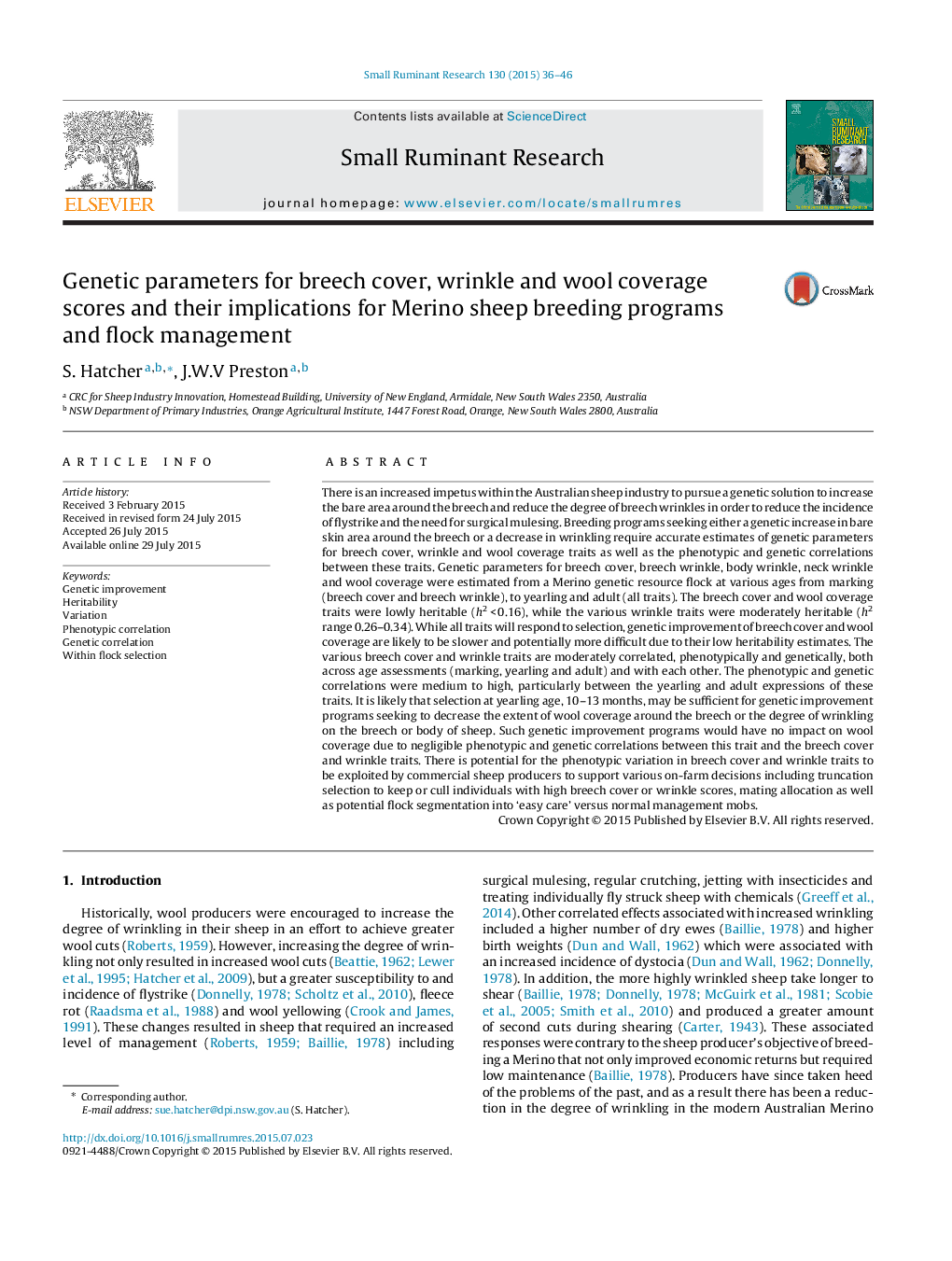| کد مقاله | کد نشریه | سال انتشار | مقاله انگلیسی | نسخه تمام متن |
|---|---|---|---|---|
| 2456839 | 1554362 | 2015 | 11 صفحه PDF | دانلود رایگان |
• The Australian sheep industry is seeking a genetic solution to reduce flystrike.
• Breech cover, wrinkle and wool coverage genetic parameters for Merino sheep.
• Heritability ranged from low (h2 < 0.16) to moderate (h2 range 0.26–0.34).
• Moderate to high phenotypic and genetic correlations between the various traits.
• Selection at yearling age may be sufficient for genetic improvement.
There is an increased impetus within the Australian sheep industry to pursue a genetic solution to increase the bare area around the breech and reduce the degree of breech wrinkles in order to reduce the incidence of flystrike and the need for surgical mulesing. Breeding programs seeking either a genetic increase in bare skin area around the breech or a decrease in wrinkling require accurate estimates of genetic parameters for breech cover, wrinkle and wool coverage traits as well as the phenotypic and genetic correlations between these traits. Genetic parameters for breech cover, breech wrinkle, body wrinkle, neck wrinkle and wool coverage were estimated from a Merino genetic resource flock at various ages from marking (breech cover and breech wrinkle), to yearling and adult (all traits). The breech cover and wool coverage traits were lowly heritable (h2 < 0.16), while the various wrinkle traits were moderately heritable (h2 range 0.26–0.34). While all traits will respond to selection, genetic improvement of breech cover and wool coverage are likely to be slower and potentially more difficult due to their low heritability estimates. The various breech cover and wrinkle traits are moderately correlated, phenotypically and genetically, both across age assessments (marking, yearling and adult) and with each other. The phenotypic and genetic correlations were medium to high, particularly between the yearling and adult expressions of these traits. It is likely that selection at yearling age, 10–13 months, may be sufficient for genetic improvement programs seeking to decrease the extent of wool coverage around the breech or the degree of wrinkling on the breech or body of sheep. Such genetic improvement programs would have no impact on wool coverage due to negligible phenotypic and genetic correlations between this trait and the breech cover and wrinkle traits. There is potential for the phenotypic variation in breech cover and wrinkle traits to be exploited by commercial sheep producers to support various on-farm decisions including truncation selection to keep or cull individuals with high breech cover or wrinkle scores, mating allocation as well as potential flock segmentation into ‘easy care’ versus normal management mobs.
Journal: Small Ruminant Research - Volume 130, September 2015, Pages 36–46
